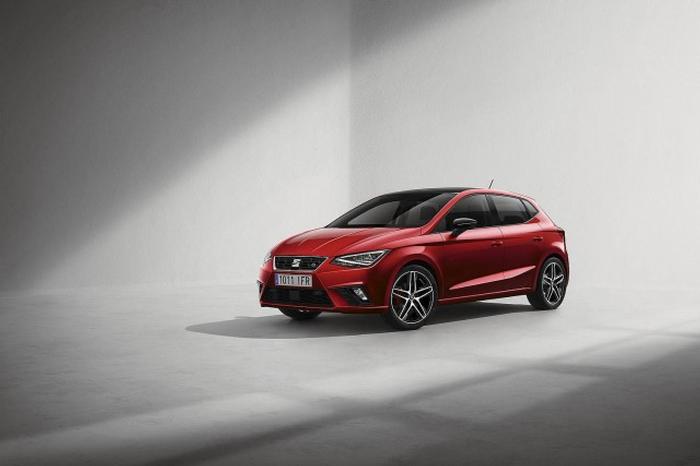2017 - 2024 SEAT Ibiza Hatchback Review

What could be the last SEAT Ibiza makes for a great used buy.
Review
What’s it like?
The SEAT Ibiza shares parts and running gear with the Volkswagen Polo and Skoda Fabia, among more, and in this group it is the sporty offering. This means it feels that bit sharper to drive, with good steering and an engaging chassis. However, it still does all the things that a small hatchback should do rather well, with a pleasant and ergonomically sound cabin, as well as having smooth powertrains, plenty of interior space, good day-to-day refinement and some desirable equipment options.
Rivals include the very Polo and Fabia with which it shares so much, but the Ibiza must also contend with the Ford Fiesta, Opel Corsa, Peugeot 208, Renault Clio, Toyota Yaris, Nissan Micra, Hyundai i20, Kia Rio and more.
Which model to go for?
SEAT sold the fifth-generation Ibiza with one engine in the main in Ireland, which is a three-cylinder, 1.0-litre petrol unit. The car was also offered with a 1.6 TDI for a brief period, so you can sometimes find the occasional 80hp TDI on the second-hand market, but they are incredibly rare, while the 1.5 TSI Evo four-cylinder petrol with 150hp is ever rarer – you might stumble across a UK import, but even over there it didn’t make it past the 2021 facelift.
Which means it’s the 1.0-litre engine which makes up the vast bulk of used Ibizas. It comes in non-turbo and turbocharged flavours, the former delivering either 75- or 80hp (it went to the higher output not long after the car launched, so is more common), while the latter is called the TSI. Really, you want to be aiming for one of these, because the MPI is no better on fuel consumption and it requires much more work from its driver just to keep up with traffic flow, due to its relative lack of torque to the TSIs.
For the turbo models, you had a choice of 95- or 115hp engines prior to the facelift, with the more potent model dropping to 110hp after the car’s update in 2021 due to various emissions-satisfying changes to its powertrain. No matter, though; whether you go 95-, 110- or 115hp, these TSIs are super-sweet, smooth units which provide more than adequate performance and really impressive fuel economy in the Ibiza’s small, light shell. The 95hp TSI came with a five-speed manual only, whereas the 110/115hp models had the choice of a six-speed manual or a seven-speed DSG – so if you want an automatic, you’ll have to have the most powerful TSI engine.
Drive went to the front wheels and the Ibiza’s strength is its sharp roadholding, although it’s more than refined and comfortable enough to be a great daily driver. Practicality is good too, with decent space for passengers in the rear and a big boot for this class, measuring 355-1,165 litres, rear seats up or down.
Irish specifications ran S then SE, and then forked into one sporty arm, badged FR, and one luxury arm, badged XCellence. Avoid S models if you can – they were loss-leaders designed only to give the Ibiza a low-looking purchase price when it was new, and they are easy to spot as they have ugly, plastic wheel trims. Every other model, from SE upwards, gained alloy wheels and other luxuries, such as air conditioning, so you can’t go too wrong with any of them.
SEAT added ‘Plus’ intermediate specifications to the line-up over the years (e.g. SE Plus and FR Plus), which added a few more toys for a modest uplift in price. Big changes to the in-car technology came during the 2021 facelift: prior to the update, lower-spec Ibizas had five-inch infotainment screens as standard, with an eight-inch item on grander cars, but after ’21 they all had at least eight-inch screens, with most sporting a really swish-looking 9.2-inch affair on top of the dashboard. There was also the option of a 10.25-inch digital instrument cluster for the first time from ’21 onwards.
Does anything go wrong?
Another Ibiza plus point – mechanically, it uses tried-and-trusted Volkswagen Group engines that have no known major issues. It’s a very reliable little car in that regard, so really the only thing you need to be looking out for is tired, abused or neglected examples with patchy history – there are plenty of second-hand Ibizas out there, so make sure you get one that has been fastidiously maintained and which looks spotless.
SEAT issued seven recalls for the Ibiza Mk5, excluding one for cars powered by compressed natural gas (which isn’t relevant to our market): two for seatbelts, plus others for a software error in the dashboard, a vacuum hose in the braking system, the driver’s airbag failing to inflate, a steering column bolt and an air-conditioning issue on early cars.



